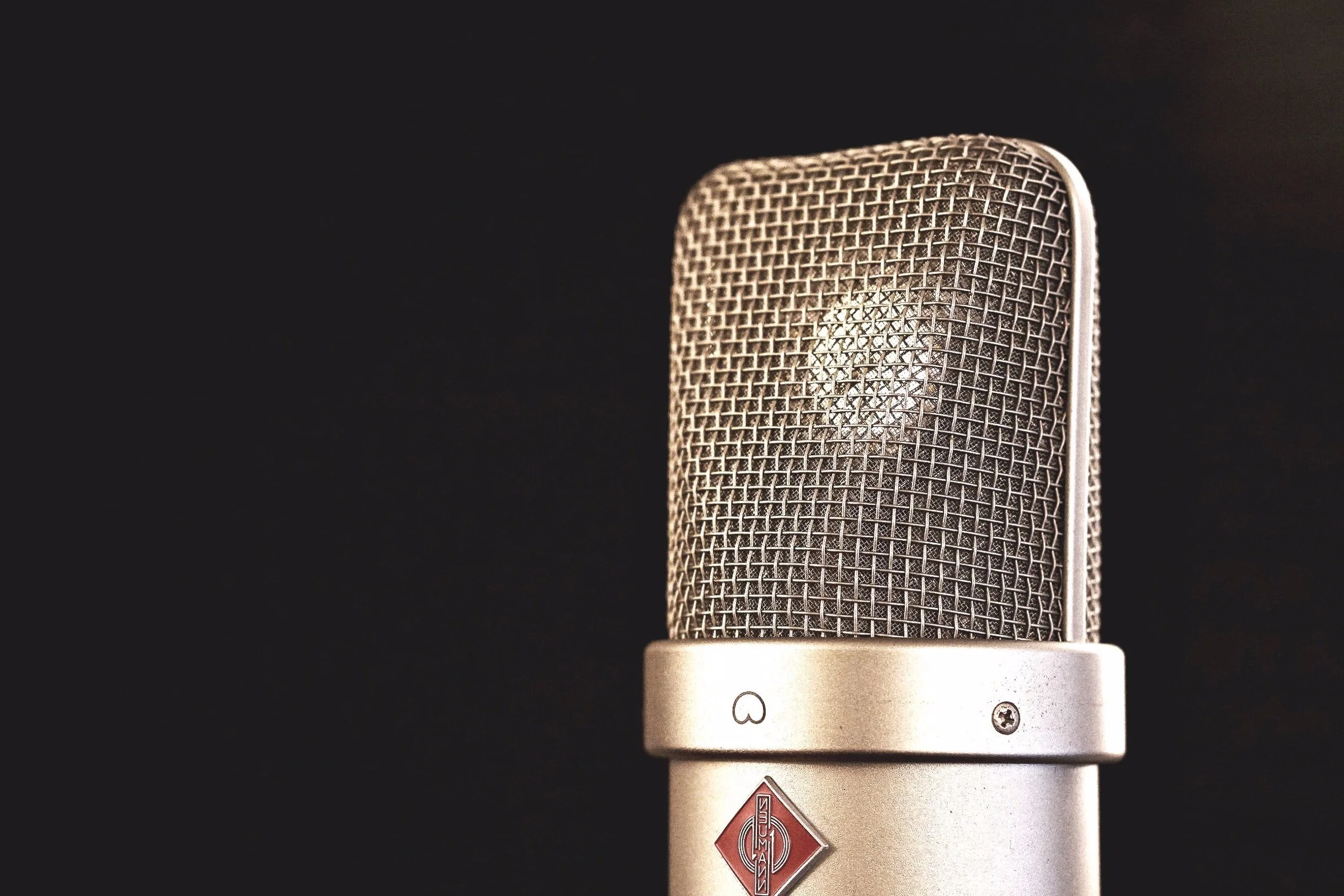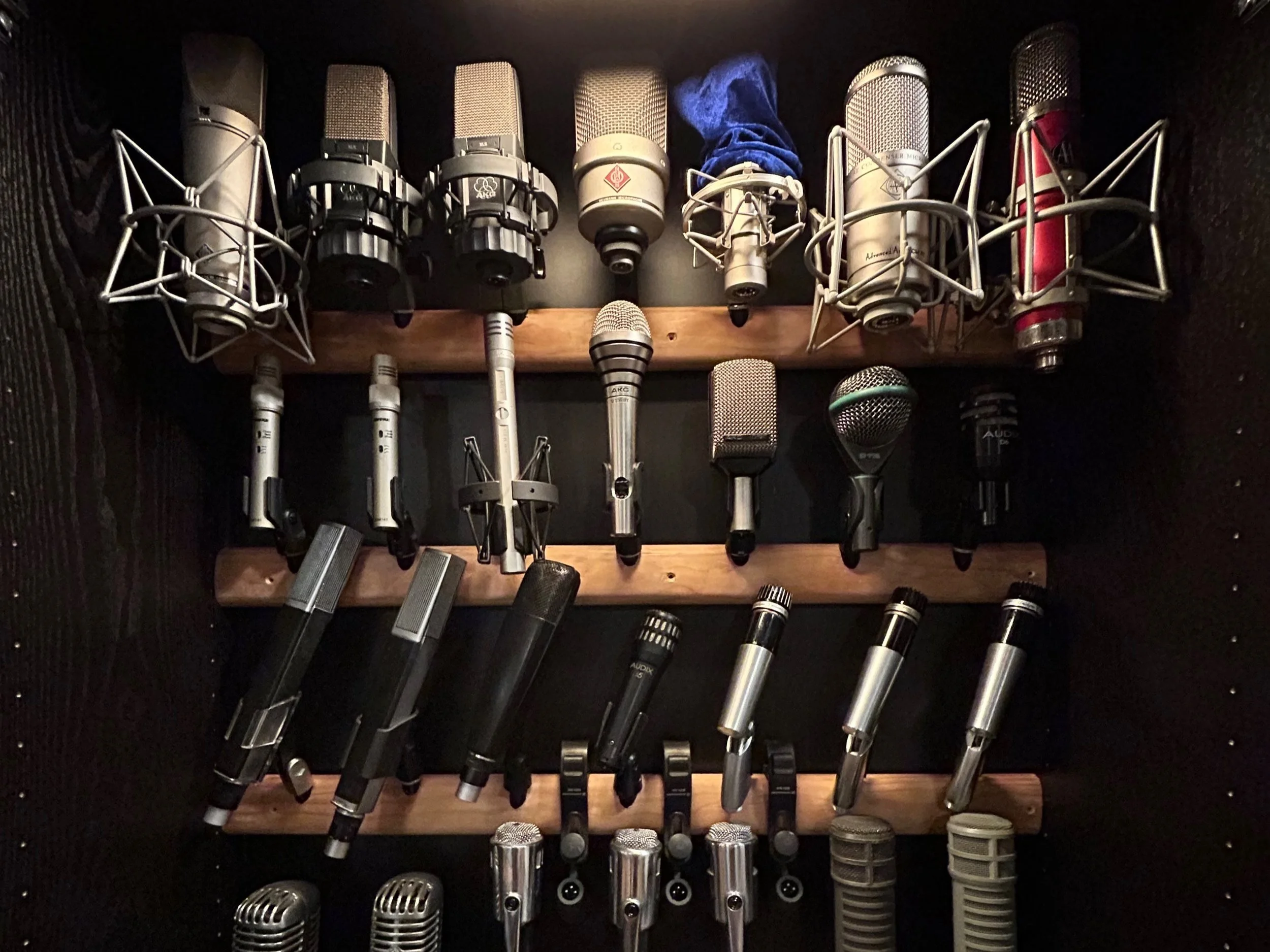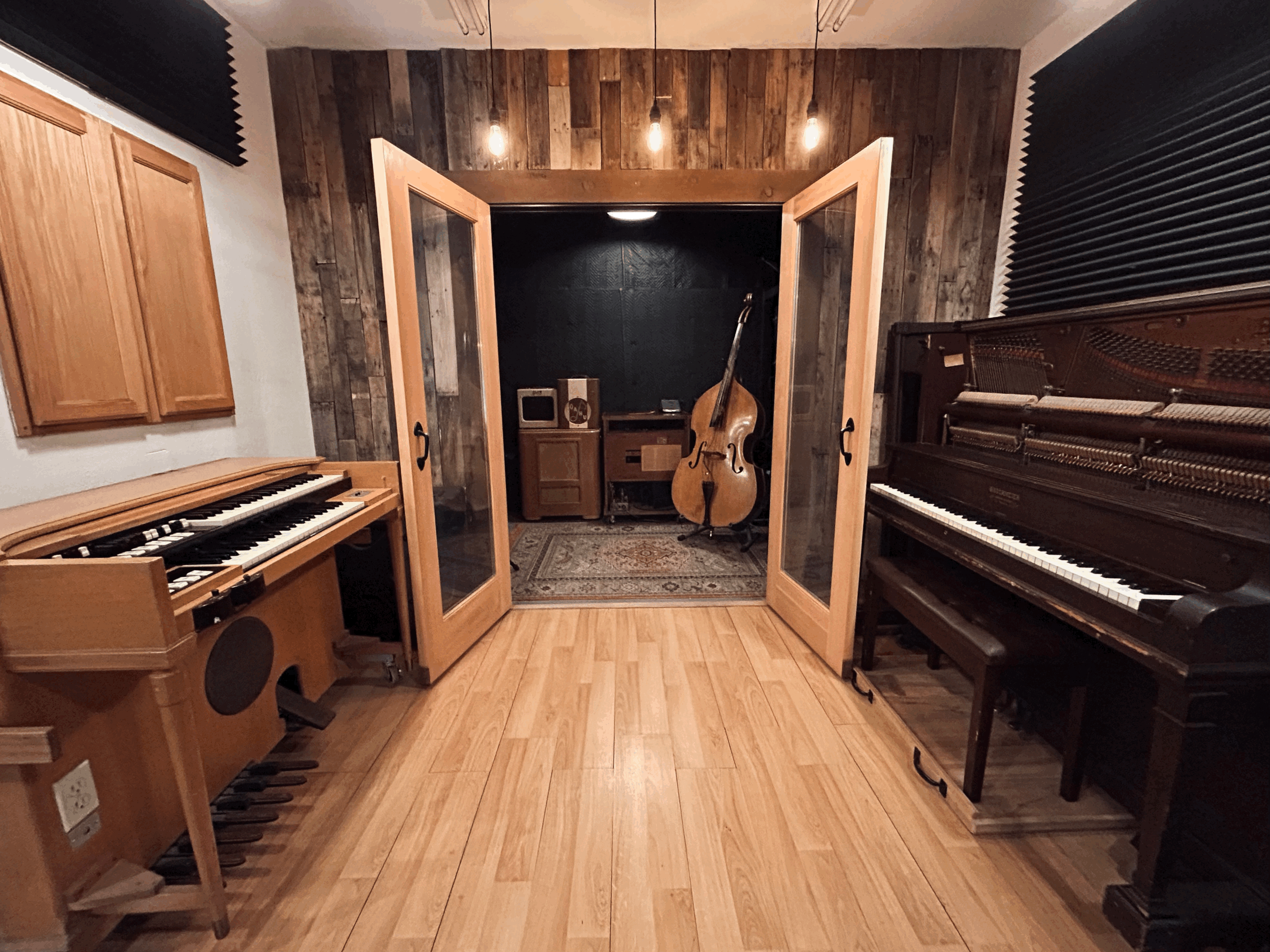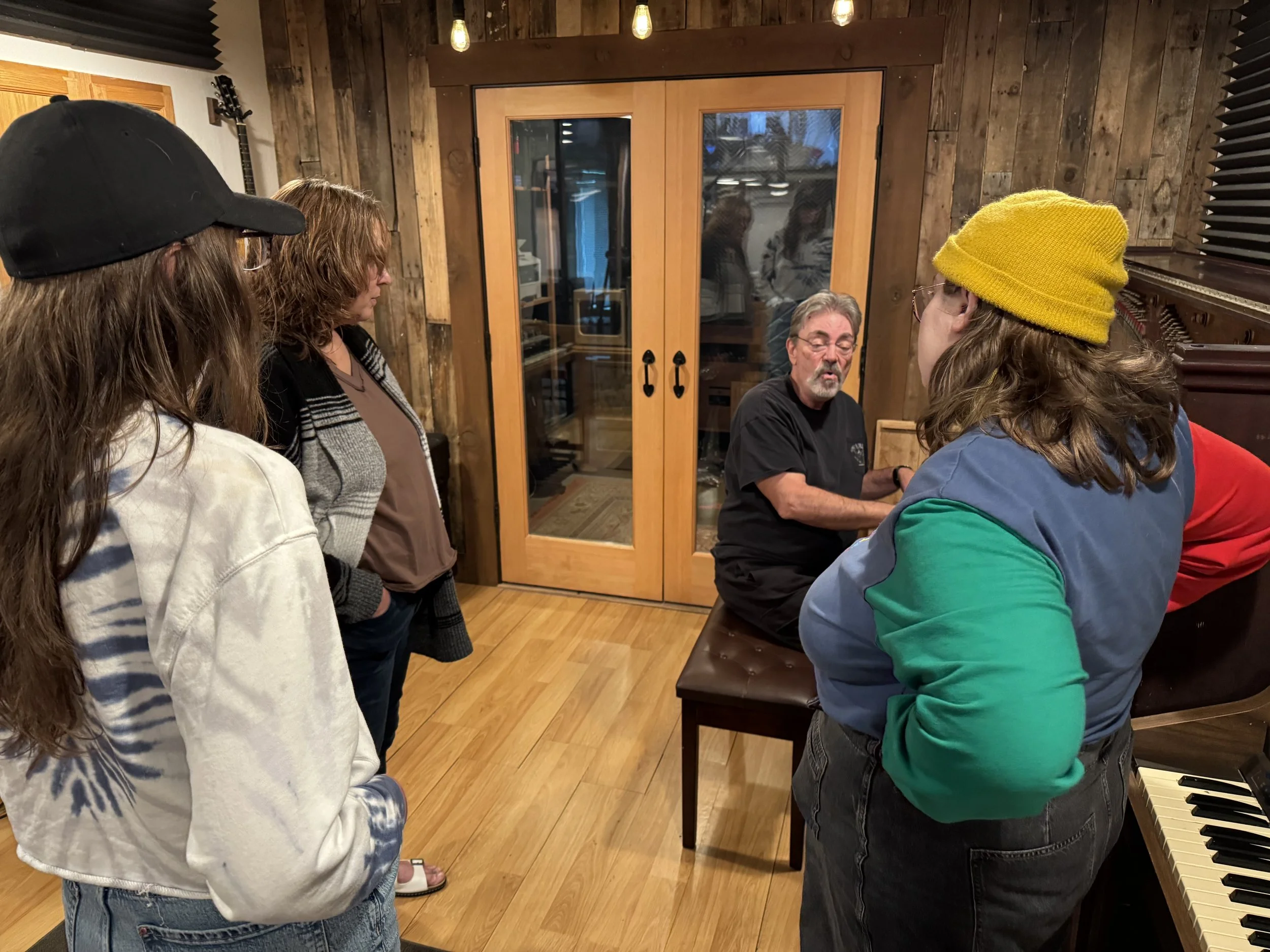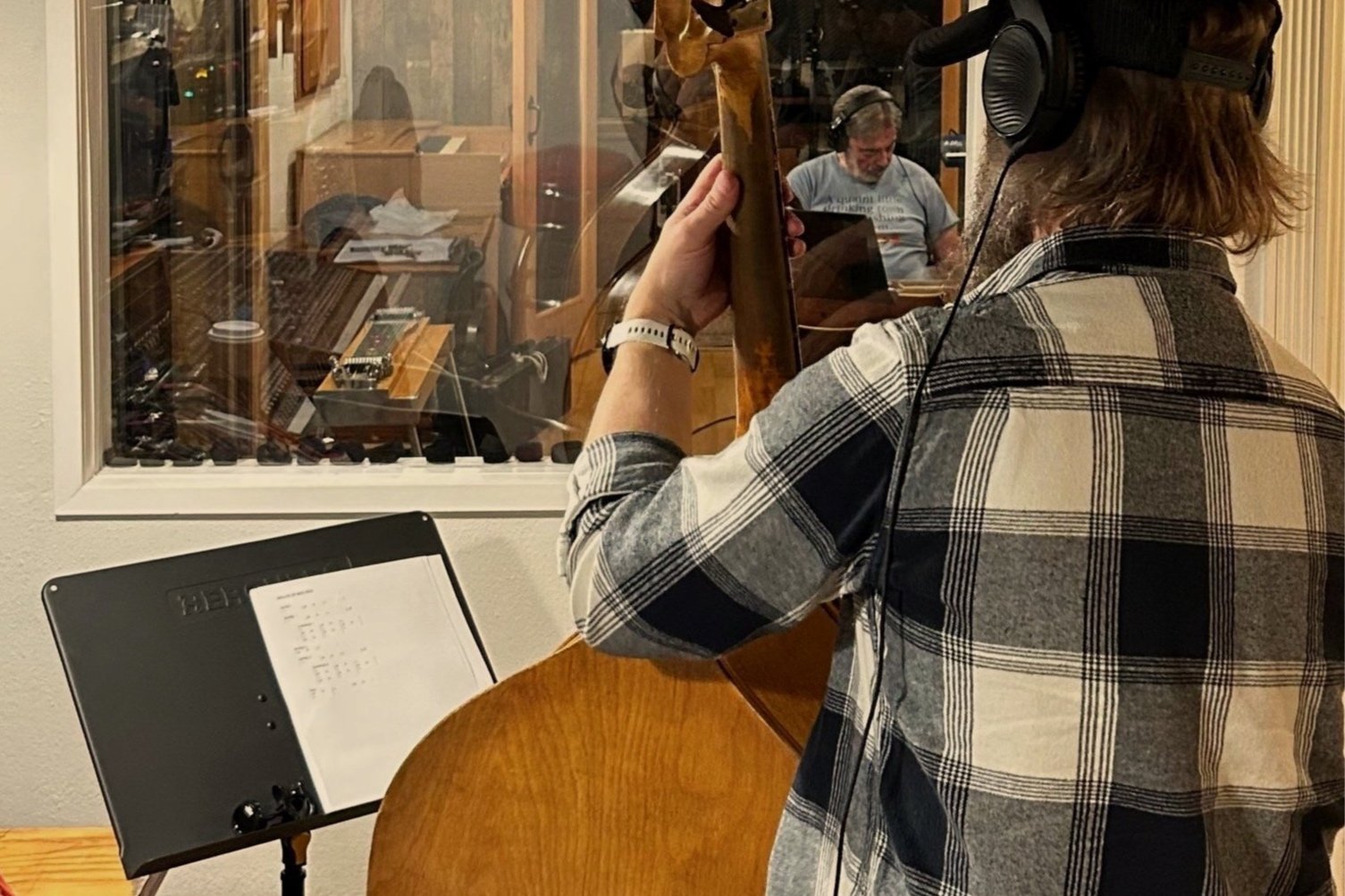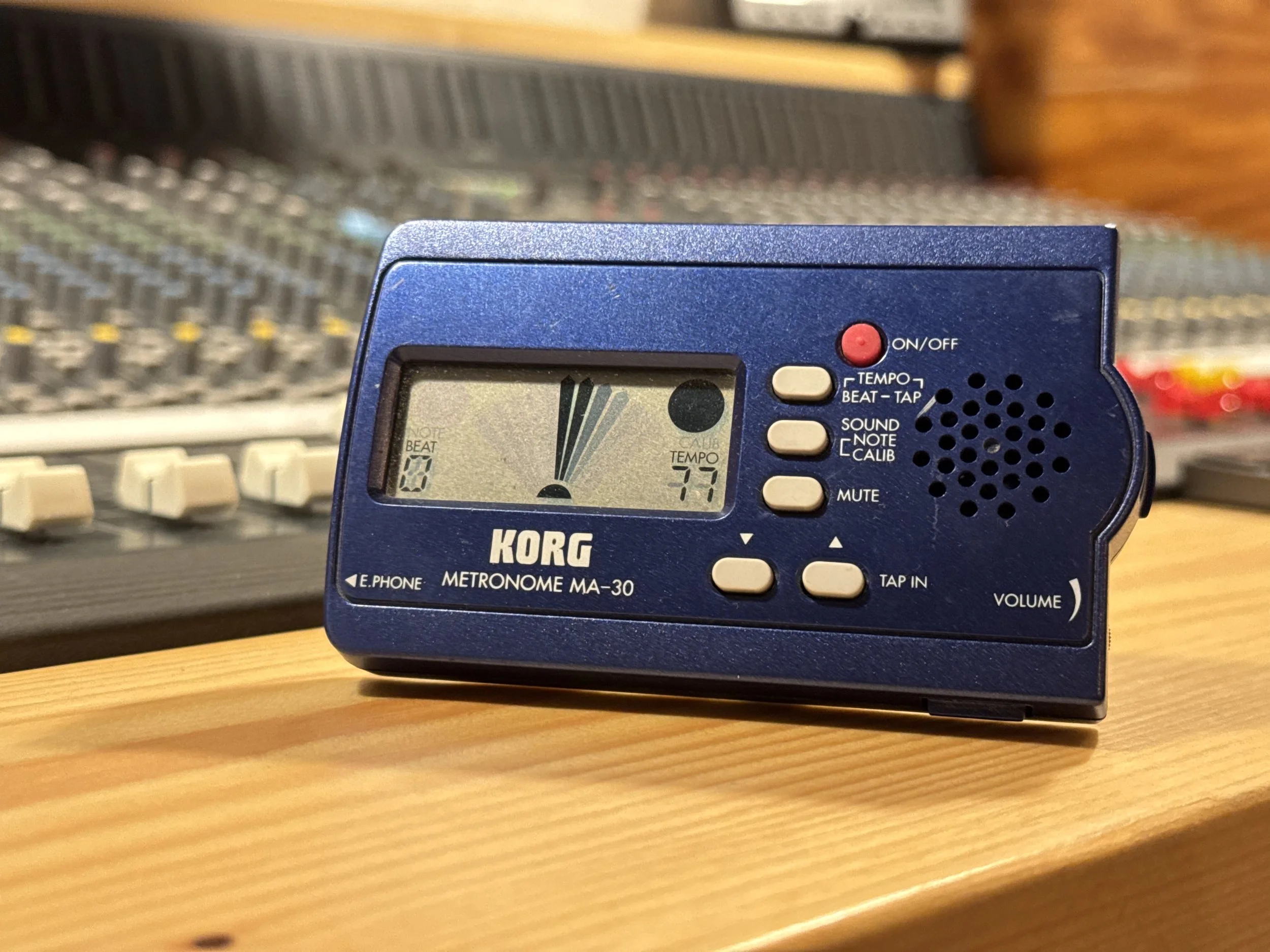Excellence vs. Perfection in Music
From Pitch to Performance
In our last blog post, we explored autotune and pitch correction, and what it means to pursue a great performance in the studio. We looked at vocal tools and how they can improve a performance or hurt its authenticity, depending on how they’re used.
That brings up a bigger question: when we aim for perfect pitch or flawless execution, are we chasing perfection or seeking excellence? This distinction matters. Because the way we answer it doesn’t just shape how we use pitch correction- it shapes how we approach music-making as a whole.
Every hour of practice, writing, and refining balances fixing flaws and growing expression. Knowing the difference between perfection and excellence shows us what matters. The goal isn’t to fix every mistake. It’s to capture something real, compelling, and alive.
Key Takeaways:
🎶 Perfection is a tool, not the goal. It points us higher, but becomes dangerous when it takes over.
🎤 Excellence comes in many shapes. From the precision of EDM to the grit of blues and rock, each genre thrives on different balances of polish and imperfection.
🥁 Imperfections can add character. The art lies in knowing which flaws to fix and which to keep.
💡 Excellence connects. Perfect tracks may impress, but excellent performances move people.
Defining the Terms
Before we go further, it’s worth looking at how the world defines these words.
Excellence: the quality of being outstanding or extremely good.
Perfection: the condition, state, or quality of being free or as free as possible from all flaws or defects.
As musicians, much of what we do- practice, refine, rewrite, adjust- is technically a pursuit of perfection. We’re working to remove flaws, to smooth out the rough edges in our performances.
But here’s the key: perfection is not the goal. We point toward it, we aim at it, but not because perfection itself is attainable. We do it because that pursuit can bring us closer to excellence.
The danger comes when perfection stops being a tool and becomes the destination. Because you can achieve something “perfect” and still completely miss the mark on what’s excellent, moving, or meaningful.
For a fuller look at the difference between excellence and perfection, you can read more in this article on Psych Central.
Lessons From the Studio
Back in 2015, Dave had the opportunity to work with Grammy-winning engineer Matt Ross-Spang at the legendary Sun Studio in Memphis. More than the technical details, it was Matt’s approach- his demeanor, musicality, and view on performance- that left a mark on Widget Studios.
Matt gave a TED Talk explaining better than most what it means to pursue excellence instead of perfection in music. That perspective has shaped how we work in our own studio to this day.
At Widget Studios, our process reflects this philosophy. As we mentioned in our last blog post, we like to combine the best takes. This can be vocals, drums, guitar, bass, or piano. We do this instead of relying too much on editing tools. If adjustments are needed, we’ll use them thoughtfully, but always in service of the performance.
Compelling music isn’t built on flawless execution; it’s built on moments that feel real. And depending on the genre, that balance looks different.
Electronic music often demands precision and control, while soul, R&B, rock ’n’ roll, and blues thrive on looseness, grit, and imperfection. Excellence has many shapes- but it rarely looks like sterile perfection.
Different genres illustrate this balance in practice:
EDM – Sam Gellaitry, “Assumptions”: A meticulously produced track where every synth and beat is polished, showcasing EDM’s pursuit of precision and near-perfection.
Blues – B.B. King, “The Thrill Is Gone”: Expressive guitar bends and raw vocals prioritize feeling over flawless execution, capturing the soul of the blues.
Rock – The Rolling Stones, “Gimme Shelter”: Gritty production and impassioned vocals convey urgency and energy, embracing imperfections to enhance authenticity.
Wisdom That Still Holds True
Thinkers and leaders outside of music have long wrestled with this same tension. Voltaire famously wrote: “Perfection is the enemy of good.” Obsession with perfection can stop us from finishing- or even starting- something good.
Coach Vince Lombardi put it this way: “Perfection is not attainable. But if we chase perfection, we can catch excellence.” Both quotes highlight the paradox we face in the studio.
Utimately, chasing perfection can lift us up and sharpen our skills. But it turns dangerous when we cling to it too tightly. The line between pursuit and obsession is thin. Pursue it loosely, and it can elevate your work. Obsess over it, and it can paralyze you.
Dave’s Perspective
As someone with years of studio experience and finely tuned relative pitch, Dave hears details most people might miss. Early in his career, that sharpness often led him to “fix” everything- quantizing drums, aligning every note, polishing every take. The results were technically perfect, but artists would return to the mixes saying something felt stiff or unnatural. The music had lost its feel.
Over time, he learned that not every flaw carries the same weight. Some imperfections weaken a performance and should be addressed. Others, though, add character, humanity, and depth.
The art lies in knowing the difference. Today, when addressing imperfections, Dave often asks: Does this need to be fixed- or is it better left alone? The answer isn’t always obvious, but holding that question loosely allows for music that breathes.
Striving for Excellence
Here’s the thing: the more we train our ears, the more flaws we’ll hear- and the more tempted we’ll be to correct them. But excellence isn’t about eliminating every imperfection; it’s about knowing which ones matter. Some adjustments will transform a song. Others will waste time or drain its life. Part of the mystery of making music is discerning which is which.
Why We Aim Higher
At Widget Studios, this is the approach that guides us every day and the standard we set- not perfection, but excellence. We’re not striving to eliminate every flaw; we’re striving to capture something alive, compelling, and true.
Our goal is always to help artists deliver performances that feel honest, powerful, and full of character. Perfection might polish away the life of a track, but excellence preserves its soul, allowing the music to connect with listeners in a way that truly matters.
We pursue the best with open hands, giving space for creativity, expression, and the unexpected moments that make a performance unforgettable. Excellence isn’t about flawless execution- it’s about capturing the essence of the music in a way that perfection never could.
Your Turn
Excellence over perfection isn’t just a philosophy for the studio- it’s a mindset you can bring to your own music, your creative projects, and your daily practice. Take a moment to listen closely to your own work: which flaws matter, and which add character? Which moments are alive and compelling, even if they aren’t “perfect”?
We’d love to hear your thoughts. Share your experiences with striving for excellence versus chasing perfection in the comments below, or tag us on social media and show us how you’re applying this in your music.
And when you’re ready to put it into practice, give us a call to discuss your next project- whether it’s recording in our studio or rehearsing in Studio B, we’ll help you capture performances that embrace excellence over perfection.
Autotune, Pitch Correction, and the Pursuit of a Great Performance
Shifting Gears: Into the Mix
In our last blog post, we talked about how to show up ready for your next studio day- geared up, focused, and prepared to capture a great performance. You can check out that post, How to Prepare for Studio Day, for tips on how to maximize your time and minimize stress. This time, we’re shifting gears and looking at what happens after the take: specifically, how we approach pitch correction- often lumped under the catch-all term “autotune.”
Whether you’re using it to clean up a vocal, shape a sound, or lean into a stylized effect, pitch correction comes in many forms. In our world, it usually falls into three categories, each with its own role in the creative process.
1. The Basics: Fixing a Pitch Problem
This is the most straightforward form of pitch correction- solving the problem of a note being out of tune. Most DAWs allow you to zoom in on a segment of audio and shift it up or down by a few cents or semitones. It’s algorithm-driven, direct, and mostly transparent. Whether you’re working in Logic, Pro Tools, Ableton Live, or any modern DAW, basic pitch-shifting tools are built in and effective when used with care.
2. Autotune as a Real-Time Process
Autotune (capital A) is actually a registered trademark of Antares, whose plugin has become synonymous with real-time pitch correction. This method involves applying a plugin or hardware unit to an audio signal and feeding it information about the key or scale- so it knows what to correct. Autotune then adjusts notes in real time to match that key.
It can be subtle, used just to tighten up a pitchy performance- or it can be pushed to the extreme, creating that signature robotic, hard-tuned effect made famous by artists like T-Pain, Cher, Kanye West, and Travis Scott.
In some genres, that sound is part of the aesthetic. In others, it’s meant to be invisible. Either way, it’s a powerful tool.
3. Melodyne and Deep Editing Tools
Software like Melodyne takes pitch correction several steps further. Melodyne allows you to dig into individual notes and manipulate their pitch, vibrato, dynamics, phrasing, and even timbre. It’s not real-time- it’s detailed, hands-on editing, and incredibly powerful when used with a clear intention.
That said, it also opens the door to over-editing. When every vocal is perfectly quantized and tuned, you risk losing the human feel that made it special in the first place.
No “One Best Tool”- Just the Right Tool for the Job
Each of these methods has its place. Pitch-shifting in a DAW is simple and fast. Autotune is great for either subtle smoothing or stylized effects. Melodyne gives you deep control when needed.
It’s not about which is best- it’s about which is right for the performance and the artist. One may be a more powerful tool, but that doesn’t mean it’s the only way to get great results. Used thoughtfully, any of them can help bring a song to life.
How We Approach Pitch Correction at Widget
At Widget, we start with the performance. That’s at the core of our process- just like we shared in our post about our analog-first studio approach. We’d always rather put in the time and energy upfront to get a performance we believe in.
One of the ways we do that is through vocal comping- stitching together the best moments from multiple takes to create one strong, expressive performance. (Here’s a good overview of vocal comping if you're curious.)
Only after we’ve done that do we even consider pitch correction tools- and if we do, it’s always a collaborative decision with the artist. Every choice should serve the song and respect the performance.
Why We Prefer to Stay Off the Grid (When We Can)
To be honest? We’d love to never use pitch correction. Not because the tools are bad, but because we believe the best vocal takes don’t need to be ironed flat by an algorithm.
When you lean too hard on pitch tools, there’s always a cost. You might clean up a note, but you might also lose the vibe, the charm, the small imperfections that gave it soul.
With time, patience, and care, we believe you can always capture the right performance- without sacrificing the human feel that makes it resonate.
Let’s Make Something Real
Whether you’re chasing a raw, unfiltered vocal or exploring creative pitch effects, we’re here to help you bring your vision to life- with intention, honesty, and great sound.
Ready to book your next session or talk through your project? Reach out here- we’d love to hear what you’re working on.
Let’s make something that feels like you.
How to Prepare for Studio Day: Maximize Time, Minimize Stress, and Capture Your Best Work
In our last blog post, we tackled the subject of click tracks: "The Click Track Dilemma: When to Use It, When to Let It Go." That post was all about timing—literal and metaphorical. We looked at how a click can shape a performance, and when letting go of it might unlock something deeper. Now, we’re zooming out a little to look at the bigger picture: studio day itself. Specifically, how to prepare for it in a way that allows you to stay focused, stay creative, and walk out with something you’re proud of.
Come prepared with complete compositions, ready to record
Let’s start with the obvious, which is also the most often overlooked: know your material. If you’re heading into a session with a song that isn’t finished—structurally, lyrically, or emotionally—you’re setting yourself up for frustration. The studio is a place to capture performances, not to figure out if the chorus should come back a third time. Writing and arranging can be part of the studio process, but it shouldn’t be the default. The more decisions you’ve made ahead of time, the more headspace you’ll have for the things that truly require spontaneity.
Have a plan—but stay flexible
That said, being prepared doesn’t mean being rigid. One of the most powerful things you can bring into a session is a clear plan—and a willingness to let it change. If you show up without a plan, chances are you’ll just wander. Ideas might get tossed around, time will get chewed up, and you’ll leave feeling like you were close to something, but never quite got there. On the flip side, if you come in clinging too tightly to a set idea of how everything has to go, you risk getting stuck. Creativity thrives in a space where structure and flexibility work together. Know what you want to do, but remain open to the idea that there might be a better way to do it.
Prepare your materials for clear communication
Good preparation also means communicating clearly—with your bandmates, your producer, and your engineer. One of the best ways to do this is to have your materials ready. Bring lyric sheets if needed. Print out chord charts or Nashville numbers for your players. Tools like iReal Pro, platforms like Chordie, or notation software like MuseScore Studio can help you put together clean, readable reference sheets ahead of time.
Make sure everything is legible, accurate, and finalized before you step into the room. This isn’t about micromanaging the session—it’s about giving people the tools they need to respond freely and confidently. A clear chart doesn’t stifle creativity. It sets a foundation from which musical ideas can grow. It allows conversations about the music to be rooted in a shared understanding of what’s going on.
Don’t let gear hold you back
And while we’re on the subject of tools: make sure your gear is ready, too. This is another one that seems obvious—until it isn’t. Change your strings before the session. Replace worn-out drum heads. Make sure your guitar’s intonation is solid and your pedals are behaving. Bring backups: tuners, sticks, capos, patch cables, extra picks—whatever you think you won’t need until suddenly you do.
If you’re looking to re-up on essentials or troubleshoot a last-minute issue, places like Sweetwater offer a wide range of reliable gear, accessories, and support to get you studio-ready. Studio time is expensive, and losing an hour to technical problems because of avoidable gear issues can derail more than just the schedule.
Take care of your body and mind
But preparation isn’t just technical or musical. It’s also physical and mental. Get a good night’s sleep before the session. Eat something nourishing. Bring snacks that won’t spike your blood sugar and crash your focus. Stay hydrated. If you’re singing, bring water or tea that won’t dry you out. A band running on fumes and empty stomachs won’t be at their best in the studio. These little details can seem minor, but in a long session, they make a difference.
Take care of the business first
Finally, take care of the money before you walk through the door. If you’re in a band, decide ahead of time how the session is being paid for. Don’t sort it out on the couch five minutes before you track. Designate one person to handle payment. Most studios expect to be paid up front anyway, so have that conversation before the session begins. When business is handled in advance, it clears the space for the music to come first.
Come ready so you can be free
At the end of the day, preparation is about creating the conditions where your best work can happen. It’s not about locking everything in. It’s about showing up ready to respond, to lead when necessary, and to trust the process when things evolve. A well-prepared artist has more room to be free. And freedom, in the studio, is often where the magic lives.
Ready to book your next session?
If you’re gearing up for a studio day—or want to rehearse—we’d love to help you make the most of it. Looking for a rehearsal studio in Denver? Studio B is ready when you are. Reach out to book your next session, ask questions, or talk through your project goals. The more prepared you are, the more fun we can have. Let’s make something great together.
The Click Track Dilemma: When to use it, When to let it go
Click Tracks & Metronomes: Do You Really Need Them?
After our last post digging into the big question of “Who are you creating for?” we figured we’d bring it down to something more grounded— but still something we keep talking about: click tracks and metronomes.
It’s come up in rehearsals, in the studio, even in those after-practice hangs. When do you use a click? Should you always use one? Is it helping— or just getting in the way?
What’s a click, really?
Let’s start simple. A metronome or click track is just a steady pulse— usually a series of beeps, clicks, or ticks— that keeps time. Some clicks are basic: just quarter notes, one sound, repeating forever. Others get fancy— accented downbeats, subdivisions, polyrhythms, swing feel. You can get deep if you want to.
And they can be used in all kinds of ways. Maybe only the drummer hears it. Maybe the whole band does. Sometimes it’s piped into in-ear monitors, other times it’s just a phone app on a practice amp. In a recording session, it can be critical— or totally unnecessary.
Some music needs a click
Certain types of music— especially dance, electronic, pop, or hip-hop— pretty much live on a grid. You’ve got layers of parts being built, chopped, moved around. A click track keeps everything aligned. It makes editing cleaner, syncing easier, and transitions tighter.
And if you're tracking in stages (say, recording drums after guitars or vocals), having a click is usually what makes that possible.
Some music really doesn’t
But then you’ve got songs that breathe. Songs that pull back in the verse and push forward in the chorus. Songs that rely on feel, not precision.
Ever listened to "Honky Tonk Women" by The Rolling Stones? The tempo shifts throughout— sometimes it speeds up a bit, sometimes it drags just enough to feel loose and groovy. That wouldn’t happen with a click. And it’s part of what makes that song what it is.
Or take "Bohemian Rhapsody" by Queen. Its varying tempos — moving from ballad to opera to hard rock — were never locked to a click, allowing for a more fluid, organic feel. This freedom is a key part of what gives the song its dynamic flow and emotional punch.
Think of artists like Nina Simone, The Band, or even James Brown— who famously used no click but had incredible internal time. These artists used tempo like another instrument, not just a container for rhythm.
But metronomes aren’t the enemy
We’re not here to bash metronomes. Far from it. They’re one of the most valuable tools a musician can have.
If you’re working on your timing, tightening up your groove, or learning to subdivide beats, a metronome will tell you the truth. It’ll call you out. It’ll humble you. (We’ve all had that moment of thinking we were in the pocket… only to find out we were rushing.)
Practicing with a click teaches you how to feel the beat, not just count it. Start with straight quarter notes. Then try turning the click into just beat 2 and 4. Then just 1. Then none at all—just feel it and come back to check in. That’s how you build internal time.
Real talk: the click isn’t right for every artist — and that’s totally okay.
For some musicians, a click track can feel limiting. It might stiffen the groove or flatten the emotional flow of a performance. For others, it’s a helpful anchor that brings focus and cohesion.
It’s not about right or wrong — it’s about what serves the song, the players, and the moment.
We’ve had sessions where the click made everything tighter and smoother. And we’ve had others where it drained the energy, so we turned it off after one take.
So… when was the first click track?
Historically speaking, the click track showed up in film scoring first. Carl Stalling used one back in the 1930s for animated cartoons— so music and visuals could sync up perfectly.
It wasn’t until the rise of multitrack recording in the ‘60s and ‘70s that clicks became common in the studio. Drum machines, digital audio workstations, and the growing demand for “tight” productions made them a default.
But even now, not every session uses one. And not every great record needs one.
Want to practice with a metronome?
There are a bunch of great tools out there now:
Soundbrenner – sleek, customizable, and even wearable if you’re into that.
Tempo Advance (iOS) – great for complex subdivisions and tempo changes.
TonalEnergy – part tuner, part metronome, part Swiss army knife for musicians.
You can also just start with a simple free app or an old-school analog metronome. Whatever helps you get tighter.
Your groove, your rules.
As musicians, we work in time as much as we work in sound. The click track is one way to shape that time— but it’s not the only way.
Use it when it helps. Ignore it when it doesn’t. Trust your ears, trust your body, trust the people you’re playing with. A great groove can come from a metronome— but it can also come from a shared look across the stage, a deep breath before the downbeat, or a little push-and-pull that only happens in real time.
So the next time someone asks “Should we use a click?”, the real answer is: it depends.
Just make sure it’s your choice.
Interested in recording?
Want to share your own love/hate relationship with the click? Or have a great example of a track that breathes beautifully without one? Drop it in the comments or DM us— we’re always listening.
Art vs. Entertainment: Who Are You Creating For?
In our last post, we explored tools—analog vs. digital—and how each shapes the sound and soul of what we make. But tools are just the how.
Now, let’s talk about the why.
Because beneath every mic check, every DAW session, every rehearsal, every messy voice memo at 2am… there’s a reason you’re making music in the first place.
So—what is it?
Are you trying to express something personal, honest, maybe even uncomfortable?
Or are you creating something people can move to, sing along with, escape into?
Are you here to make art?
To entertain?
Or to find your place somewhere in between?
Whichever it is—it matters. It shapes the way your music moves through the world.
The Artist: Inner Truth First
The artist creates to process, to reveal, to reflect. The music is a mirror, not a product.
Art doesn’t always come with a hook. It doesn’t always feel good. Sometimes, it lingers like a question with no answer. And that’s kind of the point.
Artists are often asking:
What’s true for me right now?
What haven’t I said that needs to be said?
What would I make if no one else ever heard it?
Being an artist means being okay with not pleasing everyone. You’re chasing honesty, not algorithms. Depth, not reach.
It’s vulnerable, it’s bold—and sometimes it’s misunderstood. But when it connects, it really connects.
📌 Example: Bon Iver – “715 - CRΣΣKS”
This vocoder-heavy, raw track breaks all the "rules" of mainstream structure—but it hits like a gut punch. It’s about mood, emotion, vulnerability. Justin Vernon wasn’t trying to top charts—he was processing something real.
🎧Recorded at April Base Recording Studio, in Eau Claire, Wisconsin. Watch the video below
📌 Example: Joni Mitchell – “Blue” (album)
An iconic example of unfiltered, diary-like songwriting. No flashy production—just truth, melody, and poetry.
🎧 Recorded in 1971 at A&M Studios in Hollywood, California. Check it out below
The Entertainer: Energy Outward
The entertainer’s gift is connection.
You read the room. You create moments. You bring people into something.
And that doesn’t mean it’s shallow. Entertainment is its own kind of magic—it takes intuition, presence, and heart.
Entertainers are often asking:
What do people need right now?
How can I make them feel good?
How do I leave them with something they’ll remember?
Entertainment is generous. It’s responsive. It lifts. It might be light, it might be powerful, it might just be fun—and that’s more than enough.
Being an entertainer means showing up with people in mind. You’re offering an experience, and that’s a beautiful kind of purpose.
📌 Example: Lizzo – “Juice” (Live on NPR Tiny Desk)
Effortless charisma, crowd engagement, and pure joy. Lizzo knows how to entertain without losing authenticity.
🎧Recorded in 2019 at NPR Music headquarters in Washington, DC. Watch the performance below
📌 Example: Bruno Mars – Super Bowl Halftime Show
Every move, every note is designed to light up a stadium. It’s polished, precise, and joyful—textbook entertainment done right.
🎧 Recorded in 2014 at MetLife Stadium in East Rutherford, New Jersey. Watch the performance below
The Middle Space: Where Most of Us Live
Of course, this isn’t a binary. It’s a spectrum—and most of us live in the middle.
You can write from a place of deep emotion, and still want the crowd to sing every word.
You can craft something catchy and polished, and still have it come from a real place.
📌 Example: Kendrick Lamar – “Alright”
A politically charged anthem that also became a festival chant. Personal, poetic, and powerful—but also unifying and unforgettable.
🎧 Recorded from 2014-2015 at Treasure Island, San Fransisco, California. Watch the performance below
📌 Example: Lady Gaga – “Shallow” (Live at the Oscars)
Artistry meets performance. It’s stripped back yet cinematic. She walks the line between honesty and theater with precision.
🎧 Recorded in 2019 at the Dolby Theatre in Hollywood, Los Angeles. Watch the performance below
📌 Example: Tyler, the Creator – Tiny Desk Concert
Weird, beautiful, emotional, funny. He’s not trying to fit one role—he’s making his space and inviting us into it.
🎧 Recorded in 2017 at NPR Music headquarters in Washington, DC. Watch the performance below
Even in the middle, it helps to know where you're leaning—because that clarity shapes your choices:
The lyrics you write.
The sounds you chase.
The way you show up.
The way you define success.
A Personal Pause
So take a second. Not with pressure, just with curiosity.
Right now, in this season—what’s driving you?
Are you here to express something burning inside you?
To reflect your inner world, even if no one else gets it?
Or are you here to create something that brings people joy, escape, release—something that meets them where they are?
You don’t have to choose forever.
You don’t have to label yourself.
But getting honest with yourself about your current focus?
That’s how you make music with intention—whether it’s meant to stir something deep, or simply keep the room alive.
Your Turn
Take a few minutes—grab a notebook, or just sit with this:
Am I writing for me or for them?
What do I want people to feel when they hear my music?
What do I want to feel when I make it?
No judgment. No branding. Just honesty.
That’s where the good stuff comes from.
Analog vs. Digital: pros and cons
Welcome to our blog
Welcome
Hey there, and welcome to the official blog of Widget Studios! If you’re passionate about music - whether you’re an artist, producer, engineer, or just a fan of the creative process - you’re in the right place.
At Widget Studios, we’re more than just a recording studio and rehearsal space; we’re a community built around music, collaboration, and creativity. With this blog, we’ll be sharing insights, tips, and behind-the-scenes stories about the music industry. Expect topics ranging from recording techniques and gear talk to artist spotlights, industry trends, and everything in between.
We’ll be posting about once a month, so stay tuned for fresh content, and feel free to reach out if there’s something you’d love to see us cover. Thanks for stopping by—this is just the beginning!
Introduction: The Great Debate – Digital vs. Analog in Recording Studios
The analog vs. digital debate has been a defining topic in music production for decades, with strong opinions on both sides. Analog recording, once the industry standard, is cherished for its warmth and organic character, while digital has revolutionized production with its flexibility, affordability, and precision. Some purists insist that nothing compares to true analog sound, but modern digital technology has come impressively close to replicating its warmth. So, is one truly better than the other, or does it all come down to preference and application? In this post, we’ll explore the key differences in sound, workflow, cost, and accessibility, why many studios such as our own embrace a hybrid approach, and how different genres and artists make their choice.
Sound Quality & Character
Analog recordings have a warm, natural sound due to tape saturation and harmonic distortion, while digital offers clean, precise audio with higher fidelity. Though some prefer analog’s character, modern digital plugins have come close to replicating its warmth.
Workflow & Convenience
Analog requires real-time recording and manual adjustments, while digital allows for quick edits, automation, and instant recall in DAWs. Digital is generally more beginner-friendly, whereas analog demands more technical skill.
Cost & Accessibility
Analog studios are expensive, while digital setups are far more affordable and accessible for home producers. Analog gear holds its value, while software tends to depreciate over time.
Genre Considerations
Which genres benefit most from analog warmth?
Rock, blues, jazz, and soul often thrive with analog warmth due to their reliance on organic sounds, live performances, and dynamic range.
Why electronic music and hip-hop producers lean toward digital.
Electronic and hip-hop producers benefit from digital’s precision, easy recall, and endless sound design possibilities. Sampling, MIDI, and automation make digital essential for these genres.
Case studies of famous artists using each approach.
Analog-heavy artists: Jack White, Foo Fighters (use tape machines and vintage gear).
Digital-focused artists: Travis Scott, Billie Eilish, The Weeknd (use in-the-box production and digital instruments).
Hybrid approach: Daft Punk, Tame Impala, Radiohead (blend analog warmth with digital precision).
HYBRID STUDIOS: THE BEST OF BOTH WORLDS
If you’ve ever wondered why so many studios swear by a hybrid setup, it’s simple: analog gear brings warmth, depth, and character that digital alone can’t quite replicate, while digital offers the convenience and flexibility that modern workflows demand. But not all hybrid setups are the same. Some studios mix entirely in a DAW and use analog gear for final touches, while others—like us at Widget Studios—go all in on analog mixing, using a console for most of our EQ and level adjustments before capturing the final result digitally.
Different Approaches to Hybrid Mixing
There’s no one-size-fits-all approach to hybrid mixing. Studios tend to fall into a few categories:
• Tracking with Analog Preamps and Compressors – Running vocals or instruments through outboard gear before converting to digital.
• Mixing in a DAW with Some Analog Processing – Doing most of the work in-the-box but sending certain tracks through analog gear for extra color.
• Mixing on a Console Instead of in the DAW – Shaping the entire mix on a physical console before recording the final version digitally.
• Analog Summing for Extra Warmth – Using a summing mixer to add depth and cohesion to a digital mix.
At Widget Studios, we don’t just add a bit of analog flavor—we mix in the analog realm, using the console as the heart of our process.
How We Work at Widget Studios
A lot of modern studios mix digitally and use outboard gear here and there. That’s not us. We take a more hands-on approach, doing most of our mixing on the console, not in the DAW. Here’s what that looks like:
1. We track with analog gear – Everything we record runs through high-quality preamps and compressors before hitting the digital realm.
2. We mix on a console, not just sum – Instead of tweaking levels and EQ in a DAW, we shape the entire mix on a physical console, using outboard gear where needed.
3. We rely on recall sheets, not digital automation – Since our console and gear don’t “remember” settings like a DAW, we document everything manually. That way, we can recreate mixes even though we can’t just hit “save.”
4. We capture the final mix digitally – Once we’ve got everything sounding right, we print the mix into a digital format, giving us the best of both worlds—analog sound with modern convenience.
Why We Do It This Way
Sure, mixing in a DAW is faster. But working on a console gives us something digital can’t: immediacy. We can reach for an EQ knob instead of clicking a mouse. We can balance levels by feel, not by dragging faders on a screen. It’s a process that forces us to commit to choices instead of endlessly tweaking plugins.
That’s why recall sheets are so important for us. Since we can’t save our mixes in a DAW, we keep detailed notes on every setting—EQs, fader positions, compressor settings—so we can come back to a mix with confidence. It’s old-school, but it works.
Bringing Analog Into a Digital World
If you’re thinking about incorporating analog gear into your workflow, there are plenty of ways to do it:
• Using hardware inserts in your DAW for real-time processing.
• Printing analog-processed tracks back into your session.
• Going all-in with console mixing and keeping recall sheets like we do.
At the end of the day, hybrid studios like ours aim to strike a balance—capturing the sound of analog without losing the flexibility of digital. It’s a little more work, but for us, it’s worth it.
Conclusion
The choice between digital and analog comes down to personal preference and the specific needs of a producer or studio. With advancements in technology, the gap between the two has closed significantly, allowing artists to achieve professional results regardless of the tools they use. Whether you choose analog, digital, or a hybrid setup, the most important thing is to focus on creativity and making great music.

